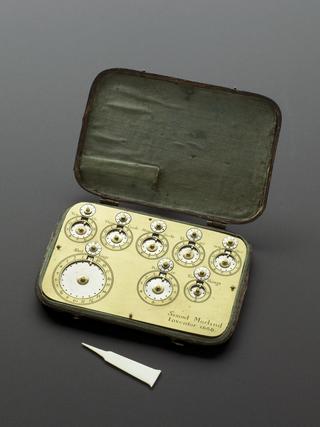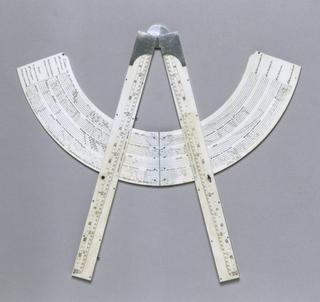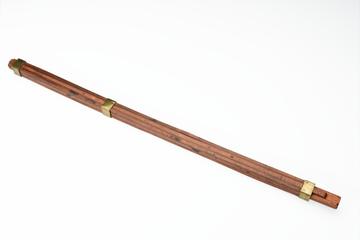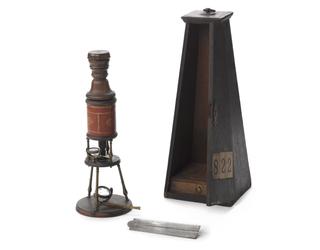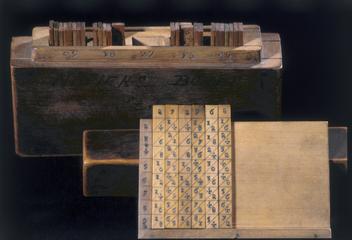
Polar planimeter, Amsler's
- Made:
- 1876 in Switzerland
- maker:
- Jakob Amsler








Polar planimeter, Amsler's
A planimeter is an instrument for automatically measuring irregularly shaped areas on a flat surface, for example on drawings, maps or photographs. The first one was built in 1818 by the Bavarian surveyor Johann Martin Hermann. However, in 1854, Swiss mathematician Jakob Amsler developed a practical, inexpensive and easy to use model called the polar planimeter as it was based on the polar coordinate system to which each point on a flat surface is determined by a distance from a reference point (the pole) and an angle from a reference direction. He simplified the planimeter’s design to two arms connected with a pivot. One arm was weighted down at the end away from the pivot, and one arm traced the drawing.
Amsler’s design and its wide applications made it a success. Amsler set up a workshop in Zurich that sold 50,000 polar planimeters of six different types all over the world in its first 60 years. The polar planimeter was his most successful invention but he continued to work on other mathematical precision instruments. His work was recognised with prizes at the world exhibition at Vienna in 1873, at Paris both in 1881 and 1889 and with his election to the Paris Académie des Sciences in 1892.
In the 19th century, polar planimeters were used to measure steam engine indicator diagrams. Indicators recorded the pressure within the engine and helped operators monitor changes within it and understand when the engine was in danger of breaking or was not using fuel efficiently.
Details
- Category:
- Mathematics
- Object Number:
- 1876-626
- Materials:
- steel (metal)
- Measurements:
-
overall: 35 mm x 105 mm x 237 mm, 0.152 kg
- type:
- planimeter
- credit:
- W.F. Stanley and Company

